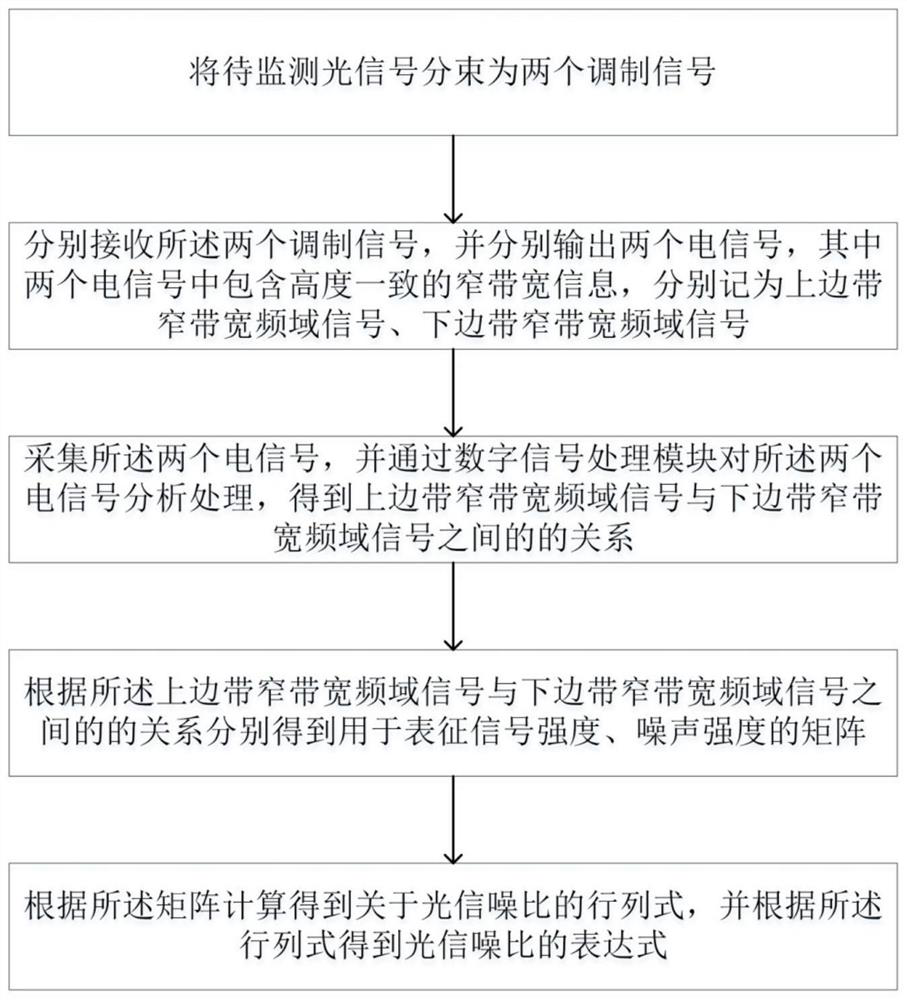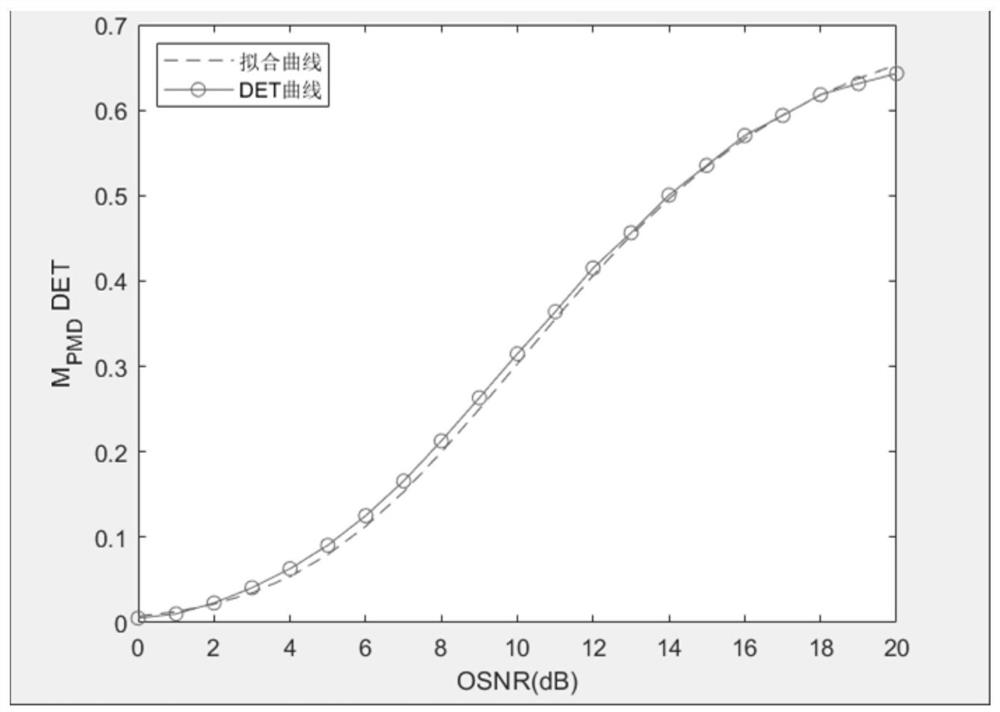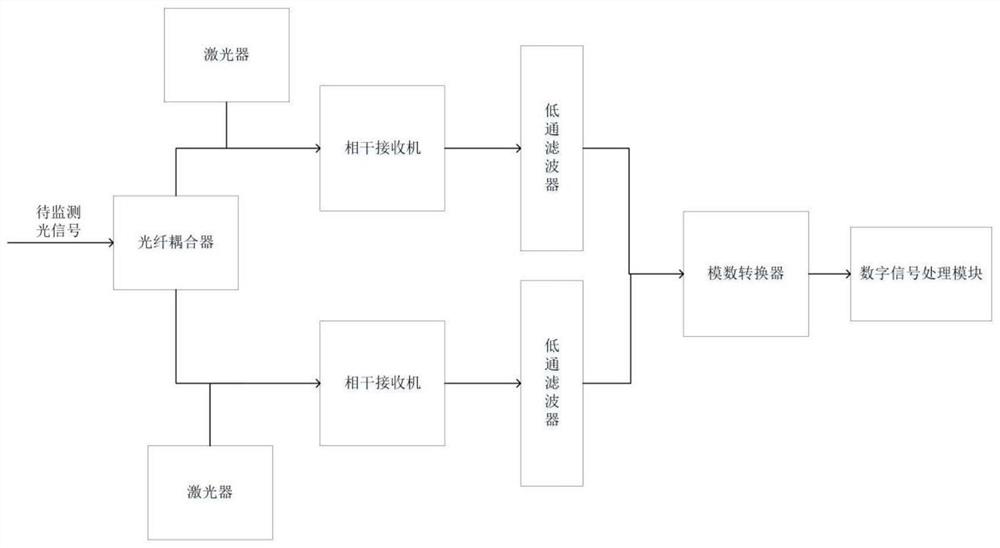Optical signal-to-noise ratio monitoring method and system
An optical signal-to-noise ratio and optical signal technology, which is applied in the field of optical communication and can solve the problems of high system layout cost, slow speed, and large amount of calculation.
- Summary
- Abstract
- Description
- Claims
- Application Information
AI Technical Summary
Problems solved by technology
Method used
Image
Examples
Embodiment 1
[0078] Such as figure 1 Shown is an optical signal-to-noise ratio monitoring method, including the following steps:
[0079] S1: split the optical signal to be monitored into two modulated signals;
[0080] S2: Receive two modulation signals respectively, and output two electrical signals respectively, wherein the two electrical signals contain highly consistent narrow bandwidth information, which are recorded as the upper sideband narrow bandwidth frequency domain signal and the lower sideband narrow bandwidth frequency domain signal respectively;
[0081] S3: collect two electrical signals, and analyze and process the two electrical signals through the digital signal processing module to obtain the relationship between the upper sideband narrow bandwidth frequency domain signal and the lower sideband narrow bandwidth frequency domain signal;
[0082] S4: According to the relationship between the upper sideband narrow bandwidth frequency domain signal and the lower sideband ...
PUM
 Login to View More
Login to View More Abstract
Description
Claims
Application Information
 Login to View More
Login to View More - R&D
- Intellectual Property
- Life Sciences
- Materials
- Tech Scout
- Unparalleled Data Quality
- Higher Quality Content
- 60% Fewer Hallucinations
Browse by: Latest US Patents, China's latest patents, Technical Efficacy Thesaurus, Application Domain, Technology Topic, Popular Technical Reports.
© 2025 PatSnap. All rights reserved.Legal|Privacy policy|Modern Slavery Act Transparency Statement|Sitemap|About US| Contact US: help@patsnap.com



